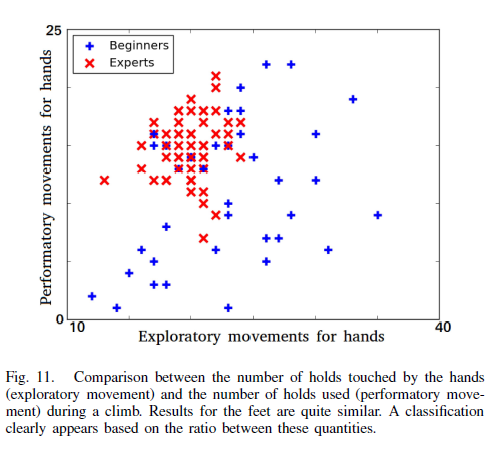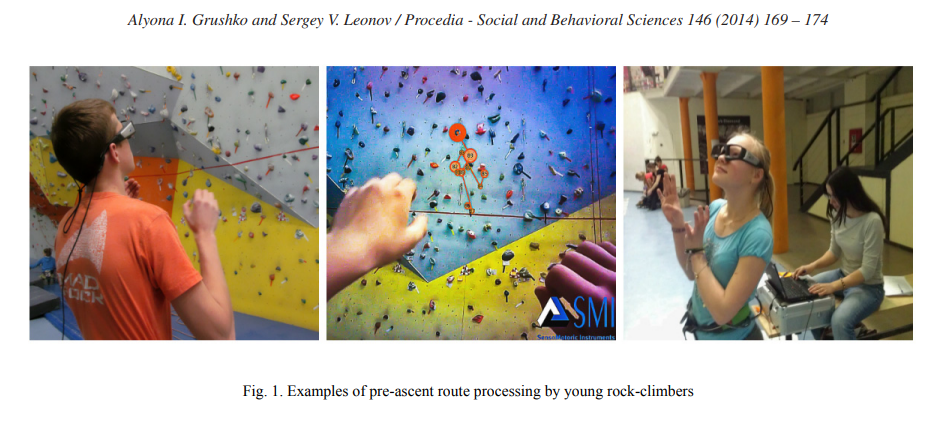Research Discussion: Movement Economy
Lattice and The Beta Angel Project are at it again! This time, we decided to chat with Taylor about the research of climbing efficiency. This will be a topic that is certainly distinct from our past collaborations which involved the hard numbers and precise methods of finger strength and RFD (Rate of Force Production, or contact strength). However, methods of studying climbing economy have seen a recent increase in rigor.
Bottom line of the research:
- Climbers should use a suite of measures, rather than any single measure, to judge climbing economy.
- The top quantitative measures include the“jerk” of the hips, the complexity of a climber’s movement, and the amount of pause in a climber’s upward movement. These methods are not yet widely available due primarily to cost of initial measurement units (IMUs).
- One qualitative research study completed in the UK involves 15 measures and can easily be transferred into practice.
- Climbing economy is very closely related to how we learn in climbing, and can be viewed through different ways of measuring “exploratory” vs. “performatory” movement.

Boulanger, Seifert, Herault, Couer, Jolly (2016)
According to Dominic Orth et al (2017) three of the more popular quantitative indicators of efficiency include:
- “jerk” or smooth functioning of the hips;
- Length and direction of the “path” of the climber up the wall which leads to a calculation for “entropy”, and;
- Ratio of immobility to mobility during a climb.
Each of the indicators becomes better through additional practice on a route, but eventually they plateau. Interestingly, this plateau occurs quicker for better climbers. No single indicator works well in isolation since, according to Croft et al (2018), the indicators all have drawbacks. For example it doesn’t make sense that immobility is always a bad thing. Additionally, each indicator can be interpreted differently based on 9 possible“activity states” of a climber, since efficiency may be different based on what a climber’s goal is e.g. grabbing vs. positioning
(Seifert et al, 2017).
These researchers also studied the relationship between route preview strategies (using eye-tracking glasses) and climbing efficiency (using the IMUs mentioned above). The route preview strategy most associated with a difficult route includes sequencing in blocks of 2-4 holds (rather than an ascending, fragmentary, or a “zigzagging” approach). Additionally, different sequencing types were associated with different types of movement economy.[

These measurements are not yet widely available, but will likely become more so as the price of IMUs go down, and/or coders integrate Machine Learning (ML) techniques in to new video analysis tools.
Nicola Taylor and her team (2018) requested help from an expert panel and group of coaches in the UK to find qualitative indicators of good climbing movement that anyone can use. The indicators are: the accuracy and precision of (1) hands and (2) feet, (3)balance, (4) hip fluidity, (5) minimal use of exploratory movement, (6)sequencing, (7) lower body movement initiation, (8) extension / body tension,(9) skill selection is appropriate for move, (10) bent vs. straight arms, (11) pacing, (12) commitment, (13) resting (14) clipping, and (15) maintenance of technical proficiency across route. You can see a Reddit conversation here with the grading sheet or visit the research inventory for more information on other research in to human movement.
Interventions for climbing economy aren’t necessarily as measurable and easy to access as hangboard protocols, but some are out there. For example, Dr. Legreneur suggests“pre-fatiguing” certain muscle groups in order to “induce an optimal displacement of the [Body’s Center of Mass] since the climber will not have enough strength to maintain equilibrium” due to the fatigued muscles. Taylor also mentioned climbers who have experimented with video and tracing paper to trace their path up a wall acrossdifferent successive attempts in an attempt to see whether they can make their hip path less “complex” and more “linear.” Do any of the quantitative or qualitative indicators mentioned here remind you of exercises you have done to promote your own climbing efficiency? Other questions Taylor had for us:
- How important is repeating routes between 2-5 additional times to your current training? Could you see yourself doing this more?
- What would be the pros and cons of promoting efficiency while fatigued?
- Do you think the 15 qualitative efficiency skills highlighted above are comprehensive? What would you add?
- Do you already use the three indicators (hip jerk, entropy, and immobility) subjectively in your training? Would it be beneficial to have a computer program track this for you?





